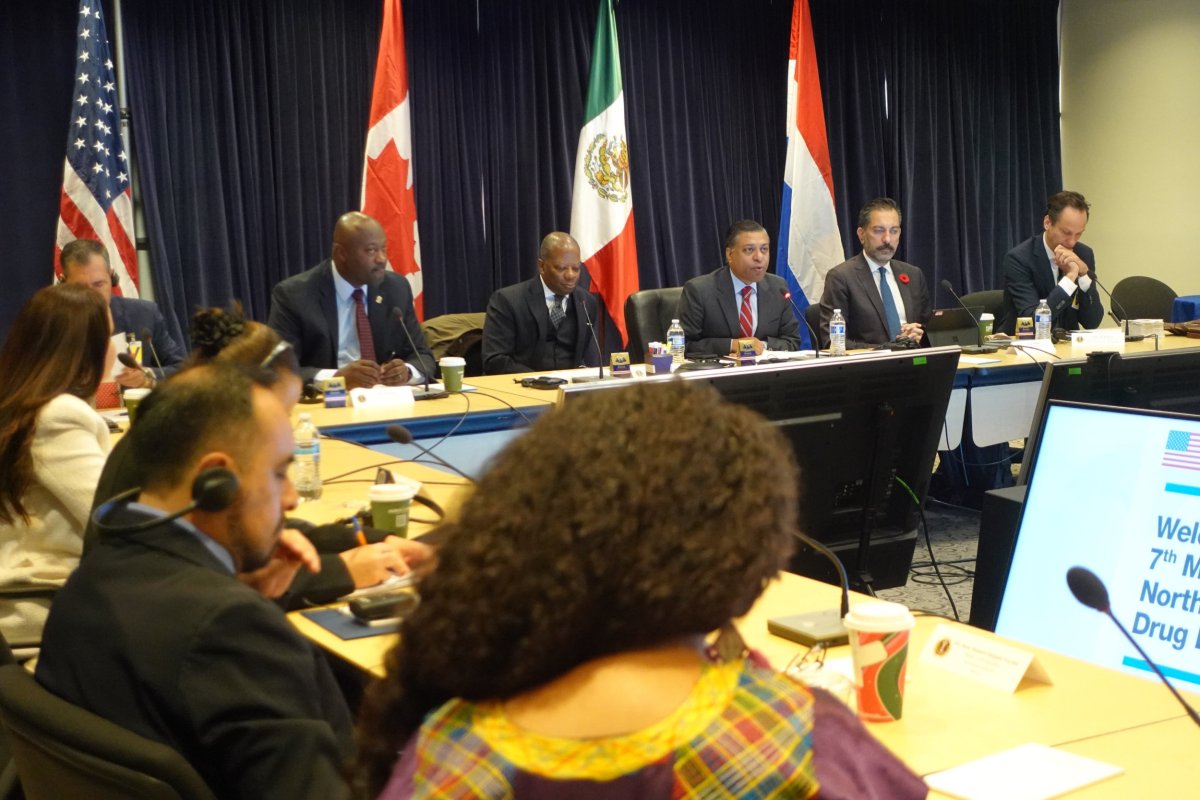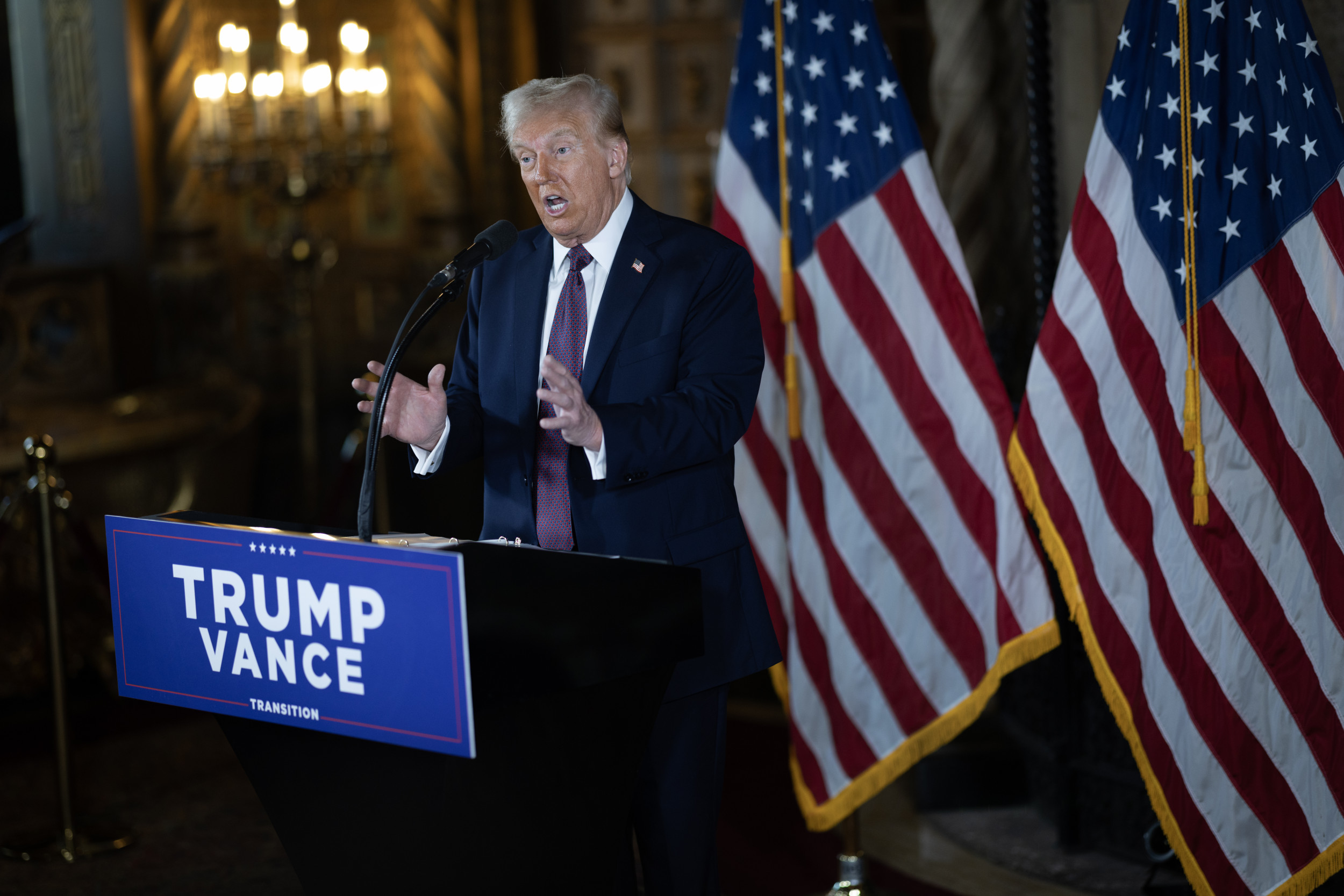President Joe Biden tapped Dr. Rahul Gupta to be the director of the Office of National Drug Control Policy, with the Senate confirming his appointment in October 2021. It's a job with massive reach—and oversight of 19 different federal agencies, along with a $43 billion budget.
Gupta was the first medical doctor to take on the role, and many said this signaled Biden's more compassionate approach to tackling drug abuse and addiction. Gupta had previously been the chief medical and health officer at the March of Dimes and a clinical professor at the Georgetown University School of Medicine. When Gupta took office, overdose deaths were reaching new highs every single month, according to data from the U.S. Centers for Disease Control and Prevention.

On his last day in his role as drug czar, Gupta sat down with Newsweek to discuss some of his achievements. This interview has been edited for clarity.
Newsweek: You took office when the pandemic was still in full swing and opioid and other drug deaths were reaching new highs. What was your mission as the director of the Office of National Drug Control Policy?
Gupta: At that time, we were seeing increases of 31 percent per year of overdose deaths, and that's just the tip of the iceberg. But behind those are people who suffer from nonfatal overdose, and behind those are the people who suffer from addiction. Knowing that there's about 48 million Americans who suffer from addiction—around 8 million of them from opioid addiction, specifically—so it was a big task, as the president asked me to figure out the policies to achieve some solutions and make significant progress....
I came from my home state of West Virginia, which always has had the highest amount [of addiction and overdose]. So it was very personal to me, having seen friends and folks I know, having attended their funerals myself.
Have you actually moved the needle on addiction and overdose?
Just today, we announced the new overdose death numbers. As of August 2024, for the prior 12 months, and we're seeing a 21.7 percent reduction in overall overdose deaths. That includes a 27 percent reduction in fentanyl deaths. So if you look at that 22 percent reduction, with 31 percent inclines initially, that's a 53 percent turnaround.
Nowhere in government or even the private sector will you see these kinds of numbers.... We have avoided anywhere between 70,000 to 75,000 people from passing away because of this work.
How did you achieve that? What made the difference?
At the time the president issued his National Drug Control Strategy in 2022, we estimated [that] if we continue to do the same as we have always, we will start to see about 163,000 annual overdose deaths by 2025. That was the prediction. But if we started to actually make policy change and invest in it, we would be down to about 80,000 a year by 2025. So if you look at the data, that's about 85,000 deaths that we could have avoided if we did the right thing and followed evidence-based policies. My job became, at that point, to do exactly that.
It was the first administration in the history of the United States that implemented a harm reduction plan, in terms of getting naloxone out there, making sure that syringe service programs, as well as drug checking for fentanyl and later for xylazine [a non-opioid sedative], were available. We made sure that we expanded treatment like never before in this country.
You inherited the legacy of the war on drugs. A big part of that job was taking on the cartels, a historically fraught and dangerous prospect. What were the challenges there?
For 70 years, this country has spent the time in capturing heads of cartels and putting a head shot to the American public. Here's the problem. On one hand, the cartels work the speed of business. We work the speed of government. The second problem is, by the time a head shot was available to the American public, there was already a new cartel head that was there, and the business went unabated, and we wanted to change that.

What did you do differently to tackle that challenge?
We learned the supply chain systems of illicit drugs and the commerce of illicit drugs. That goes all the way from the chemical companies and brokers. All the way from China and lesser so to India, to production in Mexico and on shipping mechanisms, to the financing of those efforts. And then, obviously, getting them into the country through the southern border.
And we began to go after every choke point. That meant working with the People's Republic of China and India to get some policies done. This was important because the president's Woodside, California, meeting [with Chinese President Xi Jinping] in November 2023 was a remarkable time. It would change the course of this epidemic historically, and now we're seeing much more difficulty in making fentanyl because the precursor chemicals are becoming difficult to come through China.
We went after the financing. We began to take down the intermediaries. That means the brokers, the real estate agents, lawyers and all those people that enable the trade of drugs. And then we started to have the highest levels of seizures at the border.
I mean, we've gotten in two years what we had gotten in the previous five, in terms of fentanyl seizures. At the same time, expanding drug detection technology at the border, so actually getting the artificial intelligence to work for the American people when it comes to our legal ports of entry through which 90 percent or so of the fentanyl was coming through.
How has the landscape of drug enforcement changed over the years?
Drugs have become very synthetic. Since 2018 or so, we're seeing a lot more incoming of fentanyl, as opposed to heroin or meth. Because of that, we had to have a different approach. In addition to going after cartel heads, we also had to disrupt their business model, and that's why it was very important to understand why they do what they do. At the end of the day, we realized this is about making money for them.
We have a global coalition, which is about 155 countries that have signed up to address the scourge of the synthetic drug threat across the world.... We are disrupting the business cycle. And that's been a very significant change in this administration and really obvious and very forward-leaning in a way that had not happened to this level previously, ever.
For instance, there have been over 250 sanctions under the president's executive order against chemical companies, cartel leaders, brokers and other individuals to sort of suck the oxygen or the money out of the system. The Department of Treasury has also gone after looking at the various ways of money laundering, trade-based, cyber and other aspects, working with other law enforcement agencies, same way we are focused on the intermediaries.
Because what we have learned is that there are often intermediaries that are working for multiple cartels as well as independent producers of fentanyl. So there'll be one broker or one accountant or one whomever who's holding the books and doing the orders for so many more people that we actually thought ever possible. And we utilize this knowledge to actually then work to take out these intermediaries. And that's the kind of commercial disruption approach that had not been in its full form.
Do you believe the incoming Trump administration will continue similar efforts? Have you been in communication?
We are working closely with the transition team, and I would say we're hopeful. We're hopeful because at the end of the day, we hope that this remains a bipartisan issue and a part of the unity agenda for incoming President-elect Trump. We are looking at this as not a red state or a blue state issue but America's issue.
It affects people across various spectrums of not just ideological and political differences but also geographic, socioeconomic, racial and ethnic. It cuts across, this issue, when we talk about so many people dying and suffering from the disease of addiction. We hope that the incoming team and leadership can understand and take away the lessons that have been learned, the policies, choices that we have made, and improve and double and triple down on those successes.
Now, I will say that it will not be acceptable to the American people to regress back to the days when we were seeing 31 percent increases in overdose deaths.




















 English (US) ·
English (US) ·